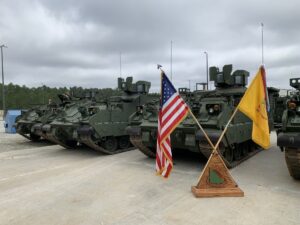
The Army on Monday achieved its “first unit equipped” milestone for the new Armored Multi-Purpose Vehicle (AMPV), as the service is also set to make a full-rate production decision on the BAE Systems-built vehicle before the end of March. Officials told reporters on Tuesday the Army is working toward a new goal of annually delivering “a brigade and a half” worth of AMPVs within two years, which would include BAE Systems increasing production from 12 to around 16 vehicles per…

 By
By 











